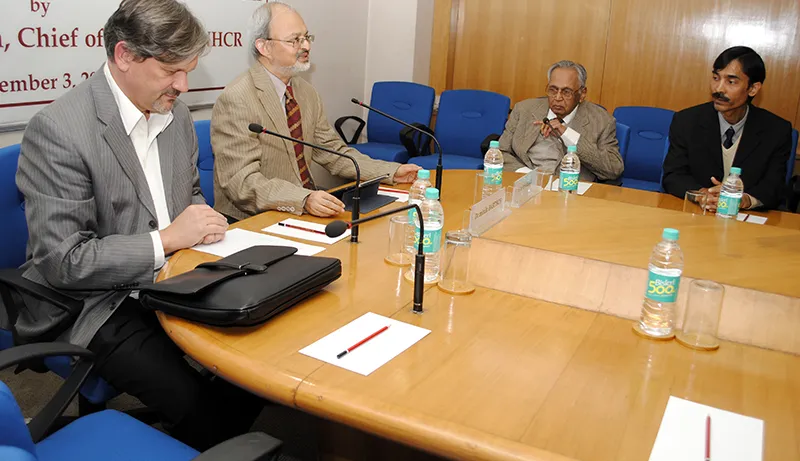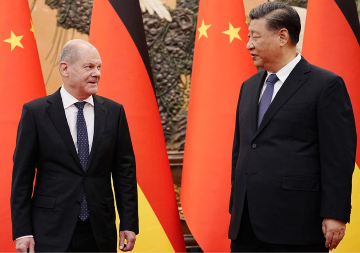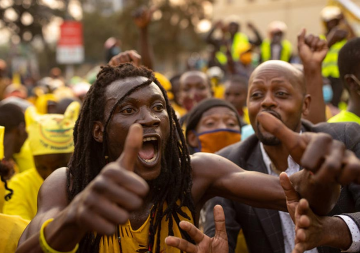India is quite advanced in refugee protection as compared to many signatories of the 1951 Refugee Convention, according to chief of mission of the UNHCR, India. Even when refugee protection comes into odds with national security, India has managed to provide social security, education and medical security.

What are the global challenges that come from the refugee movements in India and around the region, what solutions does the UNHCR offer for these problems and what is the current refugee status in India for people coming from Afghanistan, Myanmar and Sri Lanka? This was the theme of an interesting talk given by Mr. Dominik Bartsch, Chief of Mission, United Nations High Commissioner for Refugees (UNHCR) India, at Observer Research Foundation, Delhi, on December 3, 2013.
In the opening remarks, ORF Director Sunjoy Joshi spoke about the refugee phenomenon in various countries around the world. He said that people facing adverse living conditions in their own country are left with no option but to migrate to another country to lead a safe and better life. He cited examples of dislocation of people from their country and pointed out that the reasons have varied from persecution on account of race, religion, nationality, political opinion, to climate change, security threats, violence, and war. It was acknowledged that women and children have faced major problems due to displacement.
Mr. Bartsch began the talk by giving a reference to the legal backdrop provided for the protection of refugees by the UNHCR. In this respect, he said that the refugee protection foundation stone is laid in the UN declaration of human rights - Refugees have a right to seek asylum in a different country because of fear of persecution in their home country. Then there is the UN Convention relating to the Status of Refugees (1951) where the definition of a refugee is of someone who is forced to flee his or her country in fear of persecution of various sorts. The 1951 Convention protects refugees from deportation, extradition because they have not been given a chance to present their case. If a border security of the country where the refugee seeks asylum wants to send that person back, applying immigration laws, that constitutes sending that person back to danger. A reference was also made to the 1974 UN Declaration on the Protection of Women and Children in Emergency and Armed Conflict and the World Refugee Day, which is celebrated every year on the 20th of June.
India is not a signatory to the 1951 Convention on Refugees. Giving the example of Africa, he said that the country has its own refugee convention called the Organisation of African Unity (OAU) formulated in 1969, which gives rights to refugees within African states to settle in any other part of Africa because the authorities know that people have fled their home country (for e.g., Somalia) because of war. There is no such regional refugee convention in Asia.
Mr. Bartsch also spoke about the activities undertaken by UNHCR in India to help refugees. These are:
(a) First step involves registering and providing documentation to asylum-seekers and refugees.
(b) Seek long-term solutions for refugees- The most feasible and desirable option for refugees is to return to their home country if the situation has improved. In UNHCR's experience, most refugees eventually want to return to their homes. For example, during the civil war in Mozambique, 1.2 million people got displaced and once the situation eased, they all returned to their country.
Local Integration. This could mean giving a regularized status, conferring citizenship. The Hindu-Sikh refugees from Afghanistan in India may apply for Indian citizenship if they fulfill the eligibility criteria under domestic laws and are helped by the UNHCR and partners through the process.
(c) UNHCR and its partners assist refugees in becoming self-reliant and develop the skills and ability to support themselves and their families.
Mr. Bartsch gave examples of some countries in North America, Australia and New Zealand where a few vulnerable refugees may be resettled.
Difficulties that the UNHCR faces for refugee protection was also a subject matter of discussion. These included proper engagements with needs of urban refugees, human rights, asylum space, setting up of refugee status determination systems, legal counselling and making them aware of their rights, citizenship, living conditions, etc. The other concerns included non-availability of sufficient funds and lack of human capacity to respond to the crisis.
Mr. Bartsch then spoke about the cases of Afghan, Myanmarese and Sri Lankan refugees in India. There are a large number of Afghan refugees around the world. India has strong bilateral ties with Afghanistan and may play a significant role in the reconstruction of Afghanistan so that refugees may return. There are 350 visas issued every day for India in Afghanistan. Refugees and asylum-seekers form one among many categories of Afghans who come to India for reasons such as education, travel, trade and medical treatment. Given the potential impact of the reduction of international troops from Afghanistan during the course of 2014, UNHCR has reviewed its eligibility guidelines for asylum claims from Afghanistan keeping in mind the changing political and security situation.
Myanmar has recently witnessed a political revolution after 50 years of military rule. The country has renewed investment from the outside world that also includes India. There has been some progress in areas like Chin state but the situation remains difficult for Rohingya Muslims in Rakhine State who have been described as the UN as the most persecuted people in the world. They (Rohingyas) face difficulties in India because they are very poor and have lower level of awareness and education as compared to some other refugee communities.
The civil war in Sri Lanka between the government and the LTTE (Liberation Tigers of Tamil Eelam) ended in 2009. Since then there have been efforts to integrate the Tamils in the local population by the Sri Lankan government. Sri Lankan Tamil refugees are being generously hosted in Tamil Nadu, India for many years. The refugees continue to enjoy safe asylum in India and there is no pressure to return.
In his concluding remarks, Mr. Bartsch said that India is quite advanced in refugee protection as compared to many signatories of the 1951 Refugee Convention. Even when refugee protection comes into odds with national security, India has managed to provide social security, education, medical security, visa grants to refugees on its soil.
(This report is prepared by Ateetmani Brar, Research Intern, Observer Research Foundation, Delhi)
The views expressed above belong to the author(s). ORF research and analyses now available on Telegram! Click here to access our curated content — blogs, longforms and interviews.




 PREV
PREV

